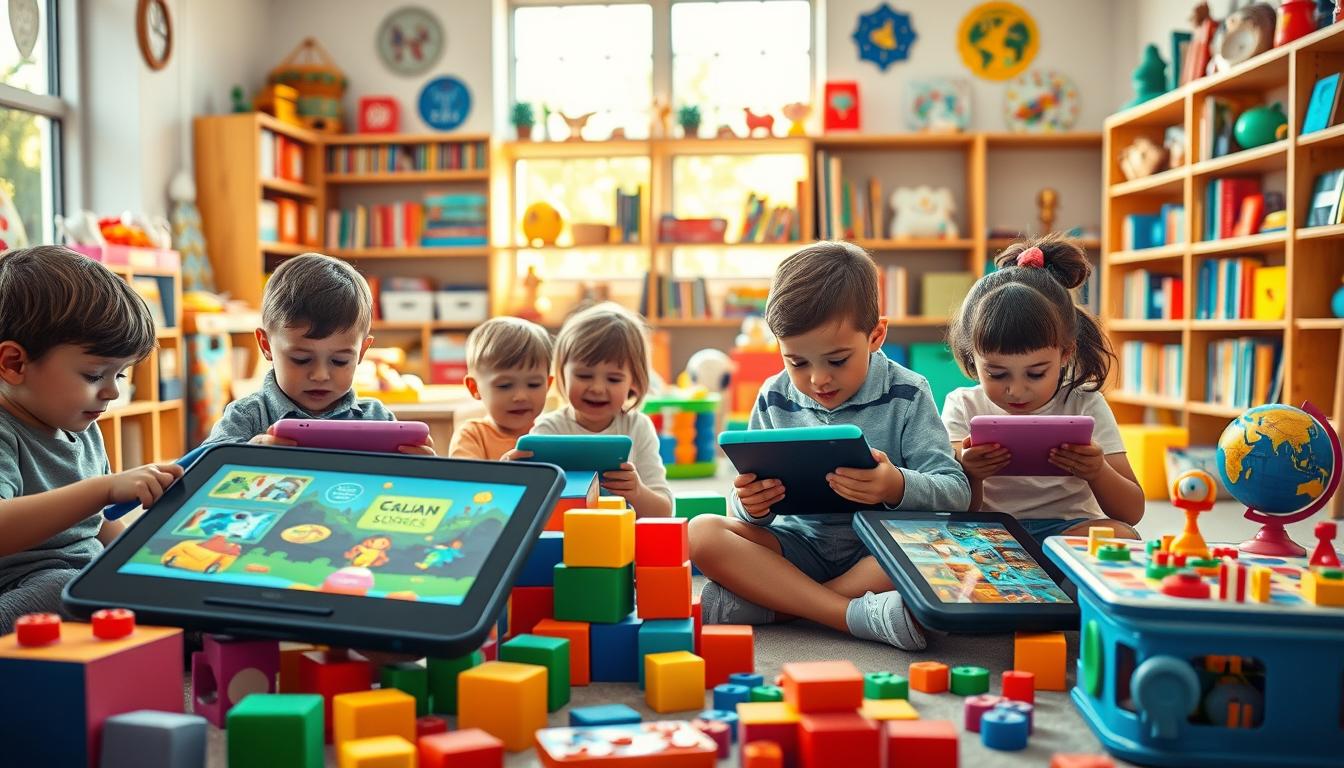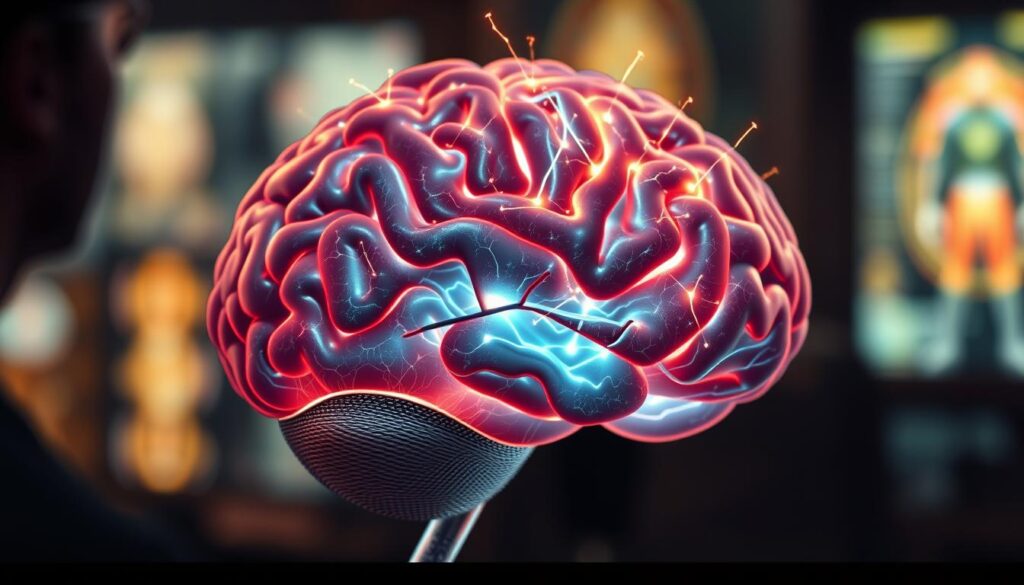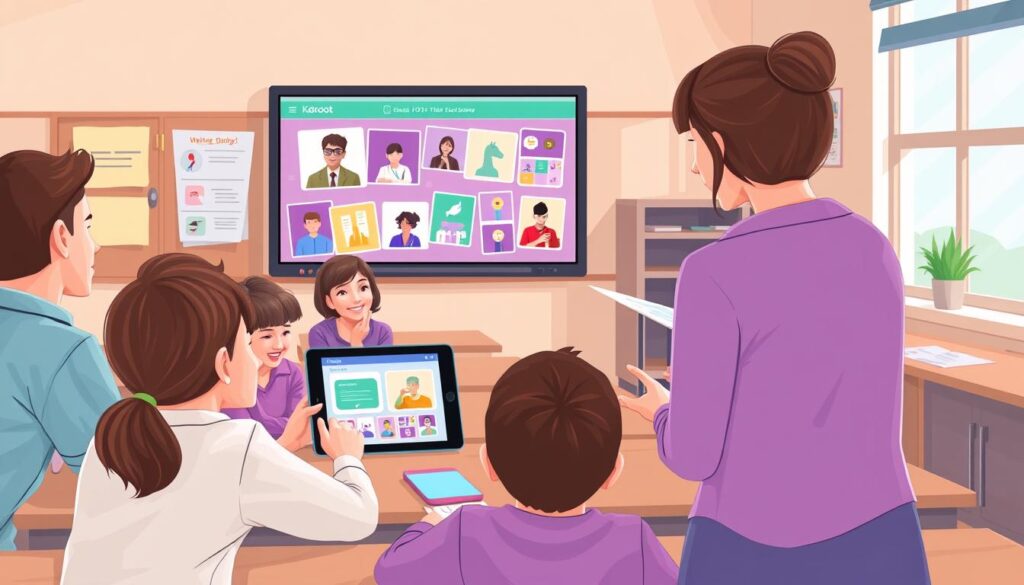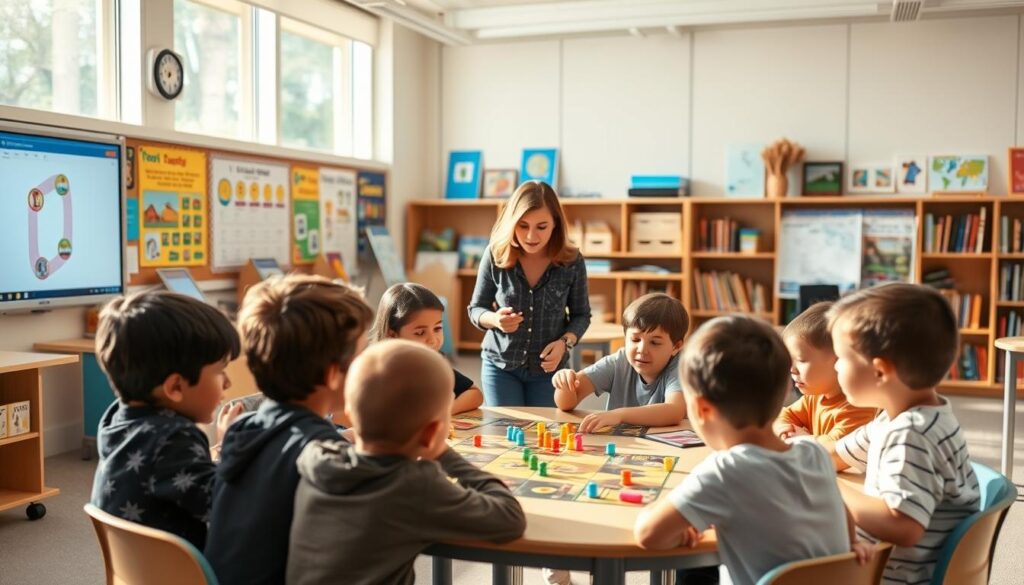
Learn While Playing Games: Fun Educational Activities
Educational games have become a powerful tool for enhancing learning experiences in modern classrooms. By combining fun with educational content, these games improve student engagement and knowledge retention.
Research shows that when students learn through gameplay, they demonstrate higher levels of participation and improved academic performance. Game-based learning creates an environment where students can explore concepts, make mistakes without fear, and develop critical thinking skills.
Both digital and non-digital educational games offer unique opportunities for teachers to transform their teaching approach. This comprehensive guide will explore how educational games work, their scientific basis, and how to create your own educational game activities.
Key Takeaways
- Educational games enhance learning experiences in modern classrooms.
- Game-based learning improves student engagement and knowledge retention.
- Research supports the effectiveness of educational games in improving academic performance.
- Teachers can use both digital and non-digital games to transform their teaching approach.
- Educational games help students develop critical thinking skills.
The Power of Educational Games in Learning
Game-based learning is emerging as a powerful tool to enhance student engagement and academic performance. By leveraging the interactive nature of games, educators can create a more immersive learning experience that motivates students to participate actively in their educational journey.
Research-Backed Benefits of Game-Based Learning
Research has shown that incorporating games into teaching can have a significant impact on student learning outcomes. According to studies, games help increase student participation, foster social and emotional learning, and encourage students to take risks. For instance, a study on the popular multiple-choice quiz game Kahoot found that it improved students’ attitudes toward learning and boosted their academic scores.
Some key benefits of game-based learning include:
- Creating a low-stakes environment that encourages risk-taking and deep learning.
- Improving knowledge retention, with test scores showing an improvement of up to 23 percentile points.
- Increasing student motivation through clear goals, immediate feedback, and rewards.
How Games Enhance Student Engagement and Participation
Educational games have a profound effect on student engagement. By transitioning students from passive recipients of information to active participants, games make learning more enjoyable and interactive. The competitive and collaborative aspects of games also help develop important social skills while maintaining a focus on learning objectives.
| Benefits of Educational Games | Impact on Students |
|---|---|
| Low-stakes environment | Increased risk-taking and deep learning |
| Immediate feedback and rewards | Boosted motivation and engagement |
| Multi-sensory experience | Addressing diverse learning needs |
As John Dewey once said, «Education is not preparation for life; education is life itself.» Educational games embody this philosophy by making learning a dynamic and engaging experience.
Learn While Playing Games: The Science Behind It
The science behind learning through games is rooted in how our brains process information during gameplay. This understanding is crucial for educators and game developers alike, as it informs the creation of effective educational games.
How the Brain Processes Information During Gameplay
During gameplay, the brain undergoes significant changes that enhance the learning process. The release of dopamine, a neurotransmitter associated with pleasure and reward, creates positive associations with learning and enhances memory formation. Games also activate multiple regions of the brain simultaneously, including those responsible for problem-solving, spatial awareness, decision-making, and emotional regulation. This multi-faceted activation promotes a more holistic learning experience.
The state of «flow» experienced during engaging gameplay is characterized by deep concentration and intrinsic motivation, creating optimal conditions for learning. Research in neuroandragogy supports the use of enriched environments, such as those provided by educational games, to enhance learning outcomes.

Creating Enriched Learning Environments Through Games
Educational games provide enriched learning environments that stimulate neural connections and promote more robust learning pathways in the brain. By leveraging the brain’s neuroplasticity, games make it easier for students to acquire and retain new information. Repeated gameplay reinforces neural pathways, helping to move information from short-term to long-term memory through spaced repetition and practical application.
Game-based learning environments address the brain’s need for novelty, challenge, and meaningful context, all of which are essential for effective learning. By incorporating these elements, educators can create learning experiences that are both engaging and informative.
- Educational games stimulate neural connections, promoting robust learning pathways.
- Repeated gameplay reinforces neural pathways, aiding in information retention.
- Game-based learning addresses the brain’s need for novelty and challenge.
Types of Educational Games for Different Learning Objectives
The diversity in educational games allows educators to choose the most effective type for their students’ learning needs. Educational games are designed to cater to various learning objectives, ranging from knowledge acquisition and skill development to problem-solving and creative thinking.
Digital Learning Platforms and Applications
Digital learning platforms like Kahoot and Quizizz have revolutionized the way teachers assess student learning. These platforms offer thousands of curriculum-aligned games that cover a wide range of subjects, including math and science. Teachers can use these tools to create engaging lesson plans and track student progress.

Role-Playing and Simulation Games
Role-playing and simulation games provide students with immersive learning experiences. Games like Alba: A Wildlife Adventure allow students to step into different roles and understand complex systems by experiencing them firsthand. This type of game helps students develop empathy and understand different perspectives.
Collaborative Team-Building Games
Collaborative team-building games are designed to develop essential social skills while reinforcing academic concepts. These games promote teamwork, communication, and problem-solving skills, creating a balanced approach to cognitive and social-emotional learning.
Different types of educational games target specific learning objectives, and by understanding the strengths of each type, educators can create a comprehensive learning environment that supports the diverse needs of their students.
Implementing Game-Based Learning in Educational Settings
To effectively implement game-based learning, educators must consider several key factors that enhance the learning experience while maintaining educational integrity.
Integrating Games into Curriculum
Successful integration of game-based learning requires aligning games with curriculum objectives. Teachers should select games that reinforce learning goals rather than using them as standalone activities. For instance, Legends of Learning games have been shown to improve science test scores when used at least twice a week.
By establishing clear connections between gameplay and learning objectives, educators can help students understand the relevance of the games to their curriculum.
Balancing Fun and Educational Content
Balancing entertainment with educational value is crucial. Games that are too focused on fun may not provide meaningful learning, while overly educational games may fail to engage students. Effective game-based learning strikes a balance, ensuring that students remain engaged while achieving learning objectives.
| Game Type | Educational Value | Engagement Level |
|---|---|---|
| Simulation Games | High | High |
| Role-Playing Games | Medium | High |
| Strategy Games | High | Medium |
Assessment Strategies for Game-Based Learning
Assessment strategies for game-based learning include in-game performance metrics, post-game discussions, and reflective writing. Teachers can also use traditional assessments to measure knowledge transfer. Research shows that consistent implementation yields the best results, with significant improvements in test scores.

Step-by-Step Guide to Creating Educational Game Activities
To effectively integrate game-based learning into your teaching strategy, follow this step-by-step guide to creating educational game activities. By doing so, you can enhance student engagement and create a more interactive learning environment.
Identifying Learning Objectives First
The first step in creating educational game activities is to clearly identify the learning objectives you want your students to achieve. This involves understanding what you want your students to learn and how you can assess their understanding through gameplay. By setting clear objectives, you can ensure that your game activities are focused and effective.
Selecting the Right Game Format
Once you have identified your learning objectives, the next step is to select the right game format. Consider the age and abilities of your students, the available resources, and the classroom setup when choosing a game format. This could range from digital games to board games or even outdoor activities, depending on what best suits your learning objectives.
Designing Inclusive Games for All Students
It’s crucial to design games that are inclusive and accessible to all students, regardless of their learning needs, abilities, or backgrounds. This involves considering the diverse needs of your students and ensuring that your game activities cater to everyone. By doing so, you can promote a sense of belonging and engagement among all students.
Testing and Refining Your Game Activities
Before implementing your game activities with the entire class, it’s essential to test them with a small group of students. Gather feedback, identify any issues, and make necessary adjustments to refine your game activities. This step ensures that your games are not only fun but also effective in achieving the desired learning outcomes.
By following these steps and considering the diverse needs of your students, you can create educational game activities that are both engaging and effective. Start small, be flexible, and continually assess and improve your game-based learning approaches to maximize their potential.
- Begin by clearly defining your learning objectives.
- Choose a game format that suits your objectives and resources.
- Ensure your games are inclusive and accessible.
- Test your game activities before full implementation.
Conclusion: Making Learning Fun and Effective Through Games
By harnessing the potential of educational games, educators can create a more inclusive and effective learning environment. Educational games represent a powerful approach to learning that combines engagement with educational content, transforming how students interact with curriculum material.
The research is clear: when implemented effectively, game-based learning improves test scores, increases student participation, and develops critical thinking skills that extend beyond the classroom. Teachers who incorporate games into their instruction report higher levels of student engagement and improved classroom dynamics.
To achieve significant learning outcomes, educators should align gameplay with clear learning objectives and provide adequate reflection opportunities. As educational technology continues to evolve, the opportunities for meaningful game-based learning will expand, offering even more innovative ways to connect students with important concepts.










